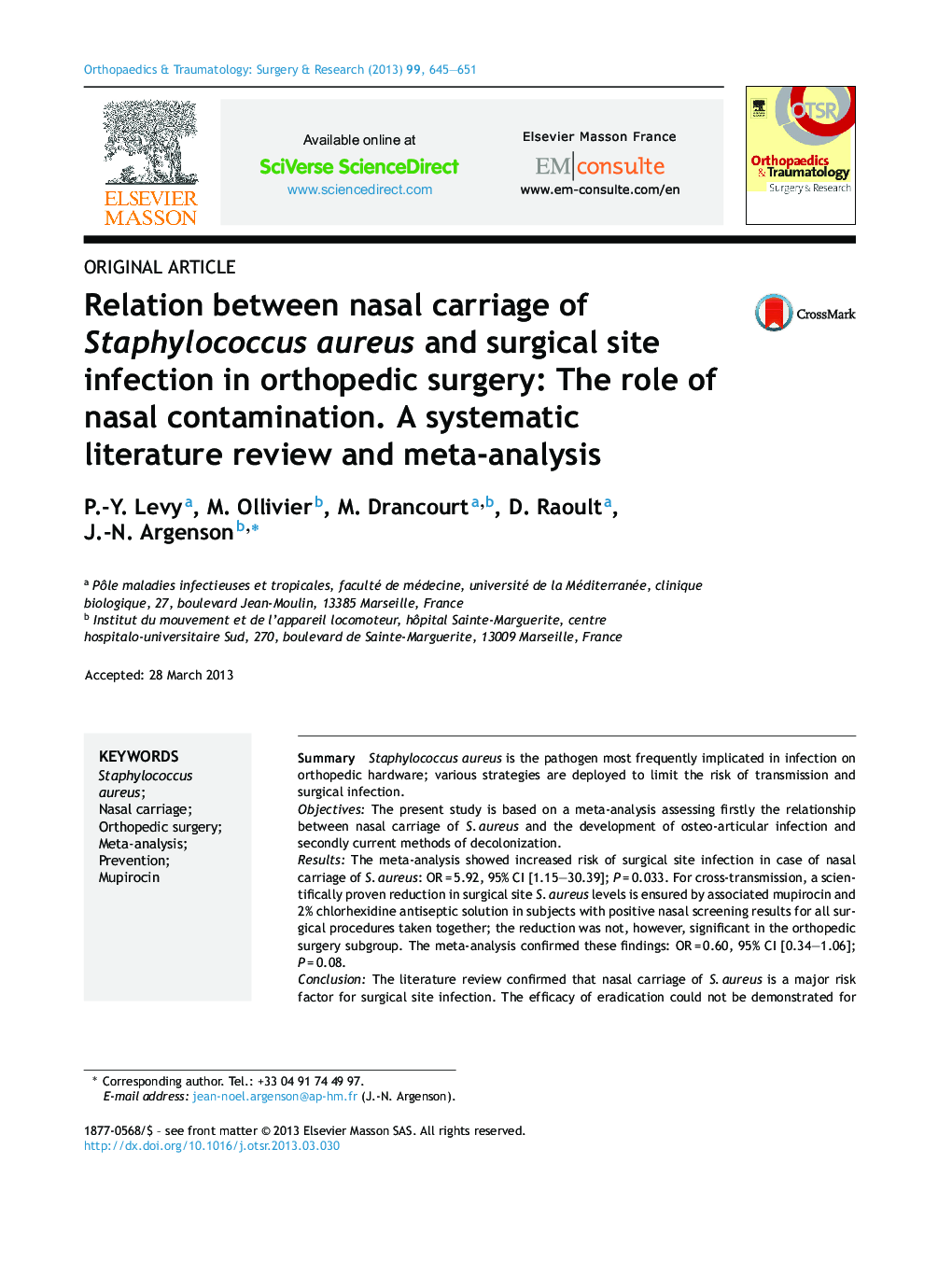| Article ID | Journal | Published Year | Pages | File Type |
|---|---|---|---|---|
| 4081723 | Orthopaedics & Traumatology: Surgery & Research | 2013 | 7 Pages |
SummaryStaphylococcus aureus is the pathogen most frequently implicated in infection on orthopedic hardware; various strategies are deployed to limit the risk of transmission and surgical infection.ObjectivesThe present study is based on a meta-analysis assessing firstly the relationship between nasal carriage of S. aureus and the development of osteo-articular infection and secondly current methods of decolonization.ResultsThe meta-analysis showed increased risk of surgical site infection in case of nasal carriage of S. aureus: OR = 5.92, 95% CI [1.15–30.39]; P = 0.033. For cross-transmission, a scientifically proven reduction in surgical site S. aureus levels is ensured by associated mupirocin and 2% chlorhexidine antiseptic solution in subjects with positive nasal screening results for all surgical procedures taken together; the reduction was not, however, significant in the orthopedic surgery subgroup. The meta-analysis confirmed these findings: OR = 0.60, 95% CI [0.34–1.06]; P = 0.08.ConclusionThe literature review confirmed that nasal carriage of S. aureus is a major risk factor for surgical site infection. The efficacy of eradication could not be demonstrated for orthopedic surgery as samples were too small. The positive trend found, however, should encourage further studies with sufficient power and risk/benefit should meanwhile be assessed on a case-by-case basis.Level of evidenceLevel 2. Meta-analysis.
